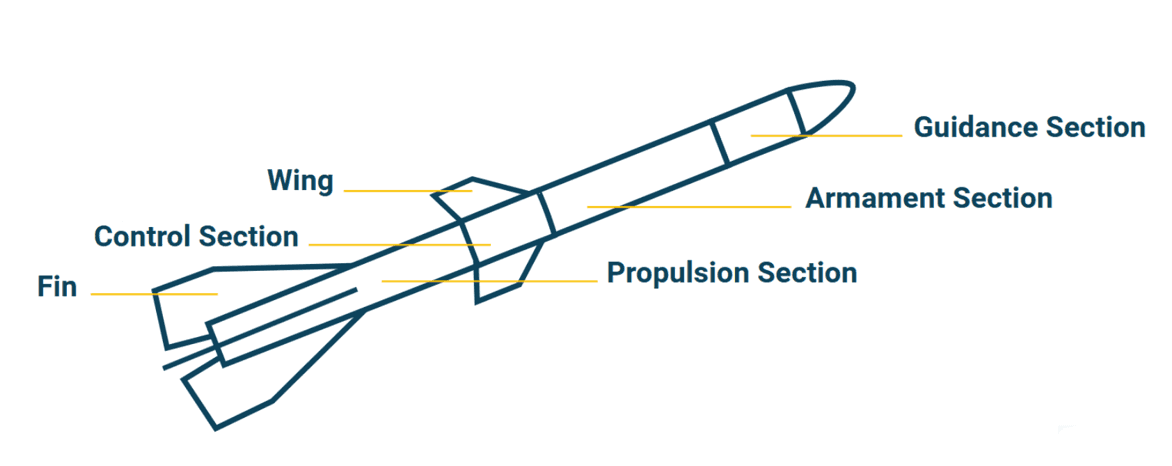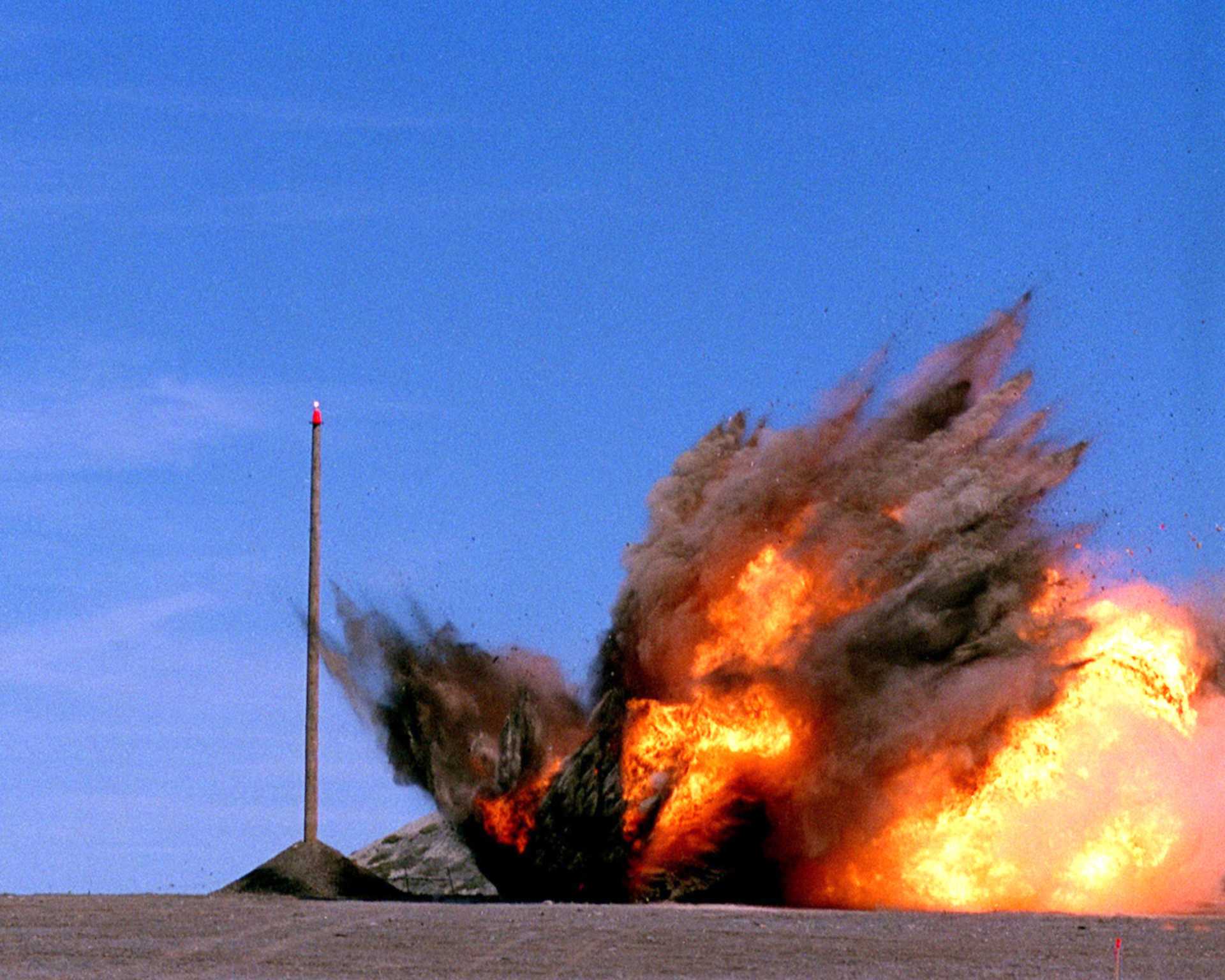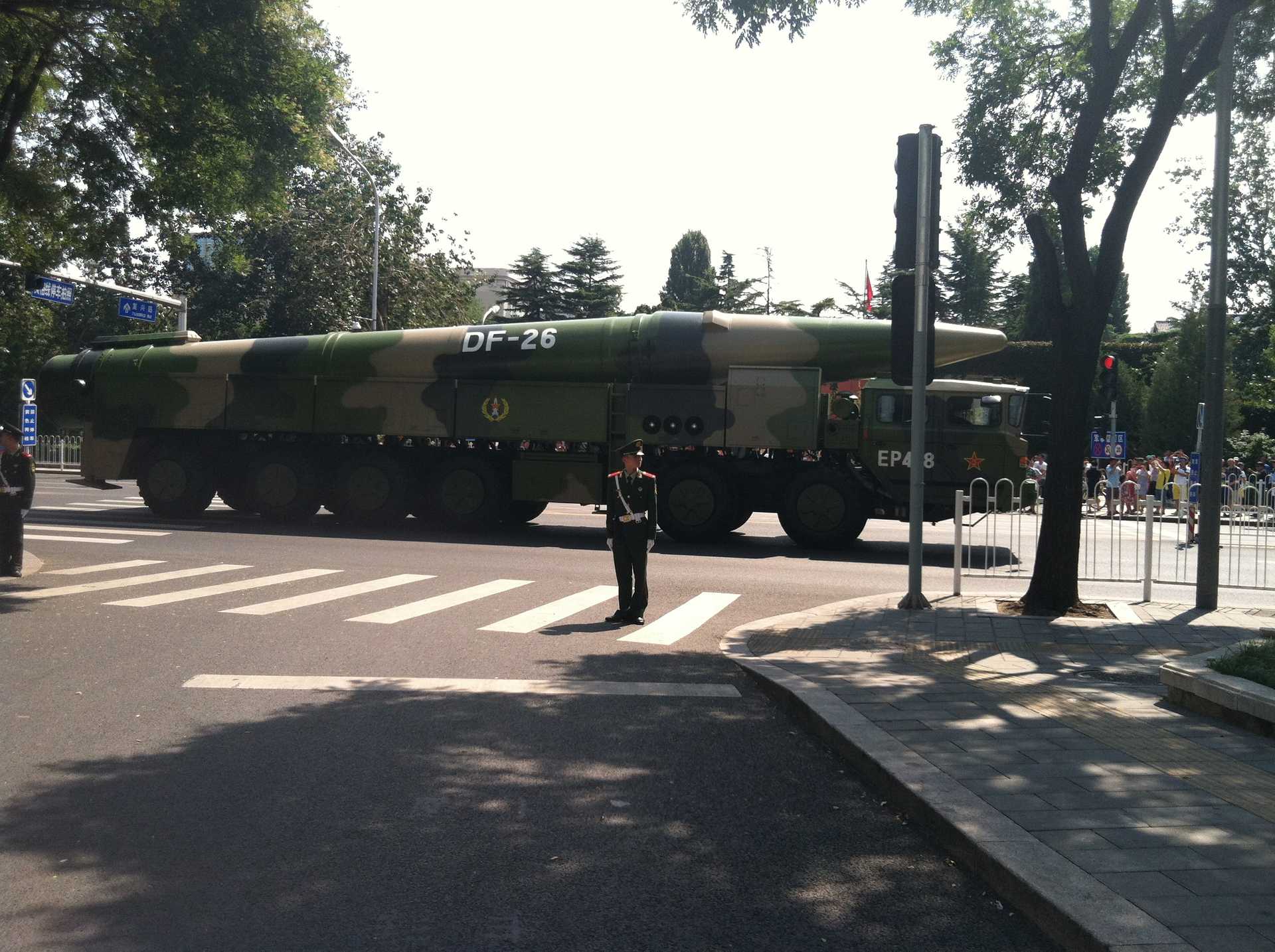What are missiles and what are they good for?
History of Missile Development
- June 1944
V1
The first V1 “Flying Bomb”, which can be described as the world’s first cruise missile, is launched by Nazi Germany against London.
- September 1944
V2
The first V2 ballistic missile is launched by Nazi Germany against a recently liberated Paris.
- October 1957
Sputnik 1
Sputnik 1, the world’s first satellite, is launched into low orbit by the Soviet Union employing a derivative of the R-7 Semyorka (SS-6 Sapwood), the world’s first operational ICBM.
- February 1959
R-7 Semyorka
The Russian R-7 Semyorka (SS-6 Sapwood), the world’s first operational ICBM, enters into service.
- 1960
P-15 Termit
The Soviet P-15 Termit (SS-N-2 Styx), one of the first and most widely produced, exported and used anti-ship cruise missiles, enters into service.
- 1983
Tomahawk cruise missile
The American Tomahawk cruise missile, one of the first and most widely used and produced dedicated land-attack cruise missiles, enters into service
- 1983
Pershing II
The Pershing II IRBM, the famous missile that was deployed to West Germany as part of the 1979 NATO dual-track decision, enters into service.
- 2003
AGM-158A JASSM
The AGM-158A JASSM, the first variant of the American JASSM family of land-attack cruise missiles, which is increasingly becoming the standard LACM in Western arsenals, enters into service.
- 2017
9M729
The Russian 9M729 (SS-C 8 Screwdriver), the land-attack cruise missile that saw the end of the Intermediate-Range Nuclear Forces Treaty (INF Treaty) by breaching the treaty’s range limitations, enters into service.
- 2017
DF-17
The DF-17, a Chinese hypersonic boost-glide vehicle missile system, enters into service.
- 1960
Shahed 131/136
The first images of the Shahed 131/136, the long-range OWA drone that has been extensively used by Russia in its war against Ukraine, are published.
Types of missiles
Broadly speaking, two types of missiles can be identified: air-breathing and non-air-breathing missiles. These terms refer to the missile’s propulsion system and whether it carries an oxidiser on board (either mixed with the fuel or separately) or whether oxygen is sucked in through an air inlet. Air-breathing engines, such as turboprop, turbojet, turbofan, ramjet and scramjet engines are generally more fuel efficient, allow for a more controlled flight profile and produce substantially fewer infrared signatures, which can be helpful to retain a stealthy flight profile. In contrast, non-air-breathing engines, such as rocket engines, are less energy efficient but can generally convert potential energy into kinetic energy much faster, resulting in much higher levels of acceleration. In addition, they offer greater flexibility, especially when they are powered by solid fuel, and are often less maintenance heavy.
Three types of non-air-breathing missiles are discussed in this unit:
- Ballistic missiles
- Boost-glide vehicles
- Rocket artillery
The principle behind all these missiles is relatively similar. They are rapidly propelled high up into or outside of the atmosphere and then, after reaching a zenith, come back down to the ground, either in the form of a separated payload section or as the entire missile system. The extent to which the trajectory approaches or deviates from a ballistic arch depends on the manoeuvrability of the missile system.
Air-breathing missiles include cruise missiles and some types of long-range one-way attack drones. These missiles stay within the atmosphere, often approach their targets from relatively low altitudes (though they do not have to), and have significant manoeuvrability, both vertically and horizontally, during flight.
Before exploring different kinds of missiles in more detail, a note on range specifications and categories is necessary. Missiles can vary widely in range, from a few kilometres to several thousand kilometres. Security analysts are typically more interested in longer-range missiles which can produce effects in the adversary’s operational and strategic depth, while sidelining shorter-range missiles that largely fulfil tactical functions, such as close air support, for example. This learning unit will similarly focus on longer-range missiles.
Importantly, the meaning of “long-range” is context dependent. For example, in the denser geographical context of Europe, where population centres and military targets are located in closer proximity, “long-range” has a different meaning than in the Indo-Pacific context, where distances between potential missile targets are vaster1. In addition, it is important to keep in mind that range categories often reflect political negotiations and decisions. For instance, the INF Treaty defined ground-launched missiles with a range of 500 to 5,500 km as “intermediate-range”. This classification is not technically inherent to the kilometre range; it reflects a purely political agreement between two states (for more information on the INF Treaty, see LU11).
Instead of focusing on more or less arbitrary range thresholds, it may be better to use functional requirements to delineate longer-range from short-range missiles. The main purpose of longer-range missiles is to engage enemy targets at stand-off range and from outside the enemy’s weapon engagement zone (WEZ). This stands in contrast to stand-in and direct attack munitions, such as short-range tactical missiles that attack the enemy from within its WEZ. As such, longer-range missiles allow possessor states to achieve effects against enemy targets while keeping their platforms and operators at a safe distance from enemy counter-measures, at least in theory. This being said, nothing prevents operators from employing stand-off capabilities against targets in close proximity and for tactical effects. The following section explores different types of non-air-breathing and air-breathing missiles in more detail.
Non-air-breathing missiles
Ballistic missiles
Ballistic missiles are powered either by solid fuel or liquid fuel, each of which has different advantages and disadvantages that need to be weighed up against each other:
- Solid fuel ballistic missiles: Ballistic missiles powered by solid fuel are less maintenance heavy, enabling quick launch capability, and facilitate storage and handling, making them ideal for rapid response scenarios and mobile platforms. However, this comes at the expense of thrust control during flight and fuel efficiency.
- Liquid-fuel ballistic missiles: Ballistic missiles powered by liquid fuel have higher fuel efficiency, better thrust control during flight and greater payload capacity. At the same time, they are more complex, require more extensive maintenance and need fuelling before launch, delaying readiness and undermining quick launch capability.
The choice between solid and liquid fuel depends on the specific operational needs of the states employing them. Historically, states have often started with liquid-fuel missiles before advancing to solid-fuel missiles.
We can also differentiate between ballistic missiles that feature separable re-entry vehicles (RVs) and unitary ballistic missiles.3
- Ballistic missiles featuring separable RVs: This type of ballistic missile leaves the atmosphere during the boost and/or midcourse phase and delivers a payload via a separated RV that re-enters the atmosphere during descent. Examples of this type of ballistic missile include the Iranian Ghadr-1 MRBM and the Chinese DF-21 MRBM.
_02.jpg)
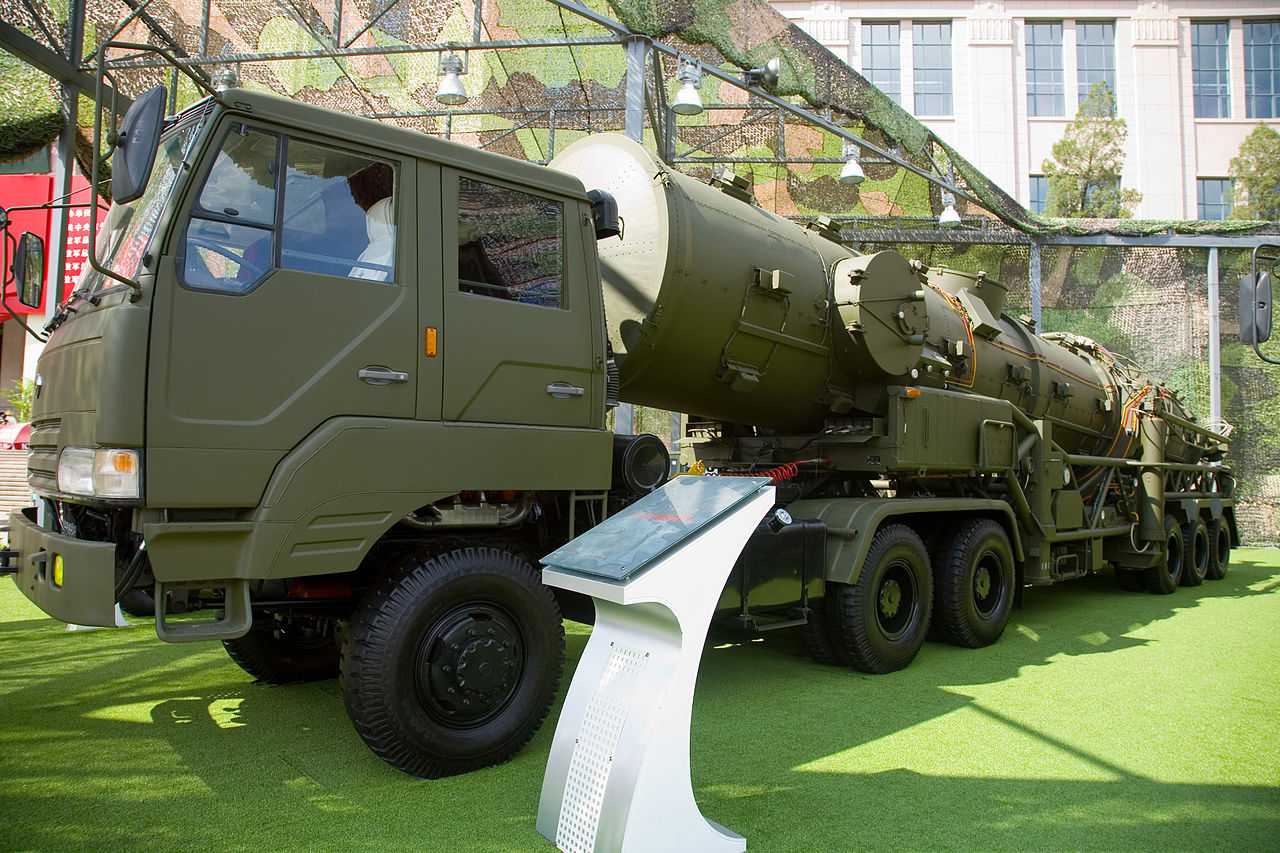
- Unitary ballistic missile: This type of ballistic missile remains unitary throughout its flight, meaning the payload is not separated from the rest of the missile during its descent. This applies to a number of SRBMs, also sometimes referred to as quasi-ballistic missiles, that do not leave the atmosphere. Examples include the American MGM-140 ATACMS SRBM and the Russian 9M723 Iskander-M SRBM.
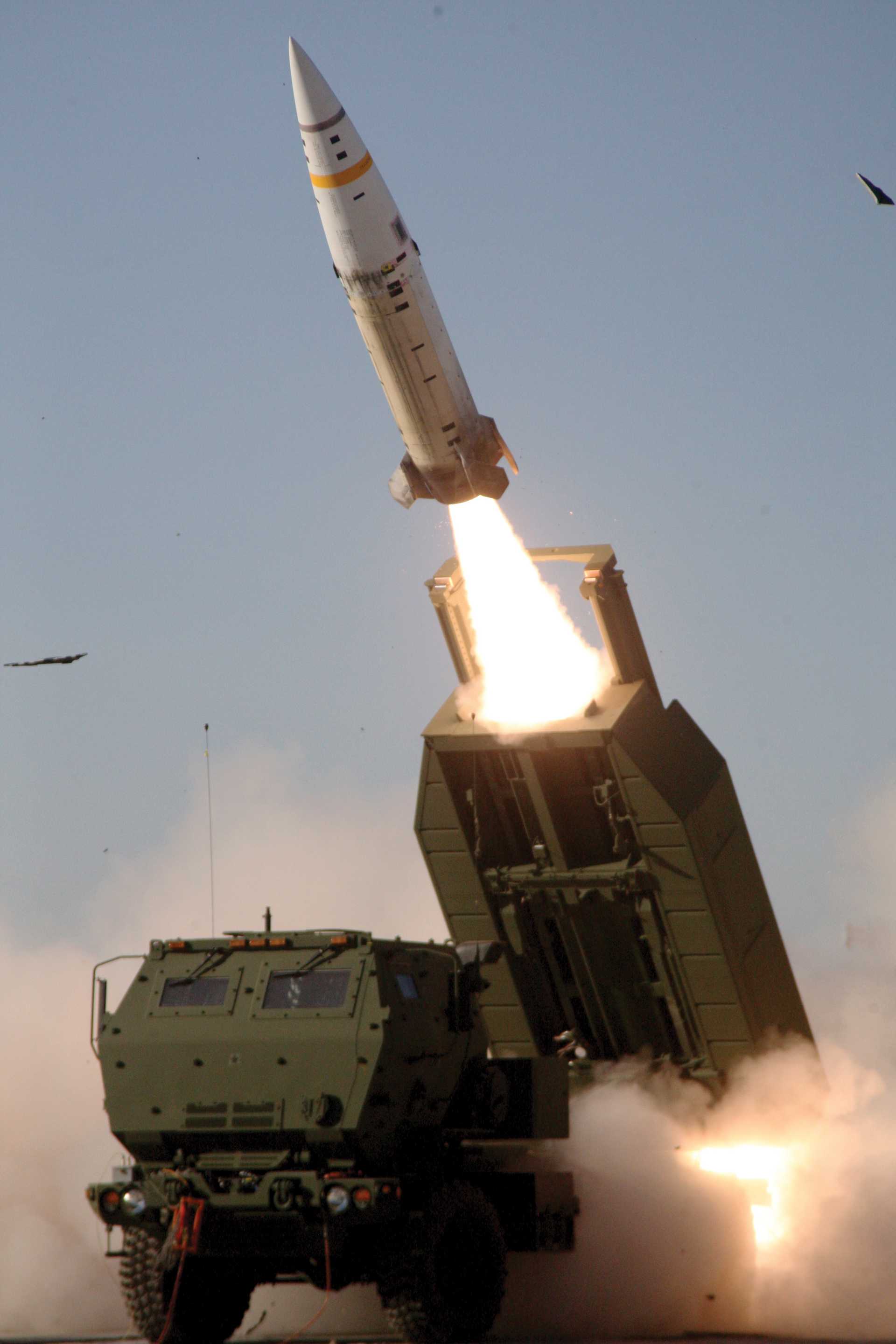
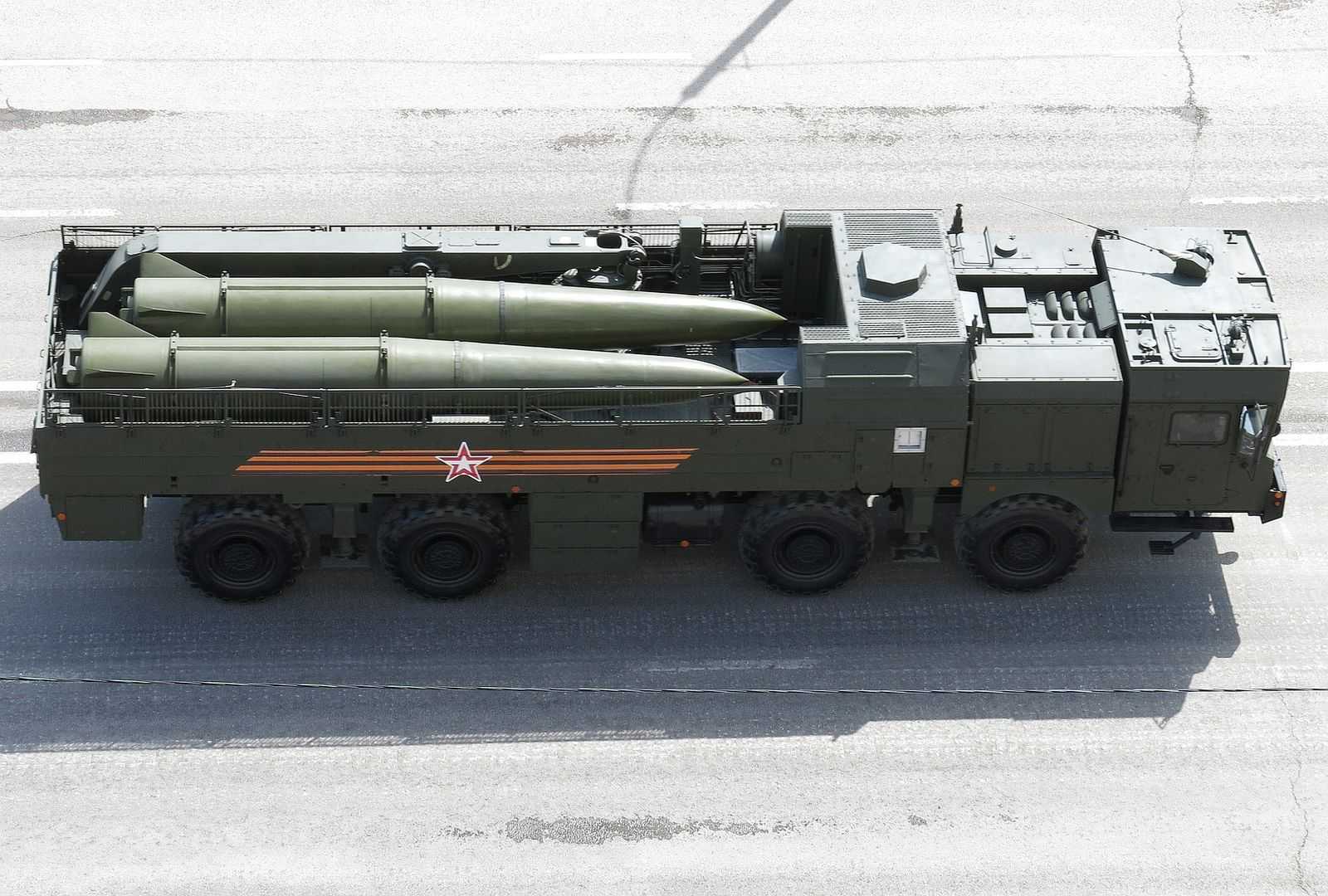
The free-fall trajectory of most basic ballistic missiles is unguided, meaning that once the RV separates from the booster section, no further course corrections occur. These missiles are guided only during the boost and potentially during the midcourse phase, rendering them rather inaccurate and ineffective against pinpoint or even area targets, especially when equipped with conventional warheads that do not carry submunitions. Examples include the Chinese DF-11 and the Russian R-17 (commonly known as “Scud-B”).
MaRVs and MIRVs
More advanced ballistic missiles retain the ability to manoeuvre and course correct longer into their flight, potentially up until the last moments before impact, which can significantly increase their accuracy.4 So-called manoeuvring re-entry vehicles (MaRVs) employ control surfaces on the RV to exploit aerodynamic drag after re-entry into the atmosphere to guide the RV more accurately towards its target. Additionally, enhanced manoeuvrability can help overcome enemy terminal missile defences. This is the case for the Iranian Fateh-110 SRBM and the North Korean KN-21 SRBM, for example. Quasi-ballistic missiles, like the above-mentioned MGM-140 ATACMS and 9M723 Iskander-M SRBMs, operate on the same principle. In this case, the entire missile body, not just the RV, acts as an aerodynamic object to perform manoeuvres.
Other types of ballistic missiles are equipped with some form of active propulsion system to increase the manoeuvrability of their RVs. This is especially relevant in the context of multiple independently targetable re-entry vehicles (MIRVs), which employ a powered “bus” that carries several RVs outside the atmosphere and launches them at separate stages to engage different targets. This technology has most prominently been employed on ICBMs equipped with nuclear payloads. While the utility of MIRV technology has been discussed in the context of conventional warfare, no “MIRVed” conventional ballistic missile capabilities exist today. 5 Examples of nuclear-armed ballistic missiles employing this type of technology include the French M51 ICBM, the British UGM-133 Trident II ICBM and the Russian RS-24 Yars ICBM.
The final ballistic missile type is one that employs powered RVs. In this case, manoeuvrability during the ballistic missile’s terminal stage is facilitated by some form of propulsion system mounted directly on the RV to enhance late-stage manoeuvrability. This can be particularly relevant when engaging mobile targets such as ships that can travel significant distances between the missile being launched and the payload reaching its target. At the same time, boosted RVs may also be useful in overcoming terminal missile defences deployed by the adversary. For example, China reports that its DF-26 IRBM has this type of powered RV capability.
Precision and guidance
The first operationally deployed ballistic missile was the Aggregat 4, better known as “Vergeltungswaffe 2”, or “V-2”, developed and used by Nazi Germany during World War II.
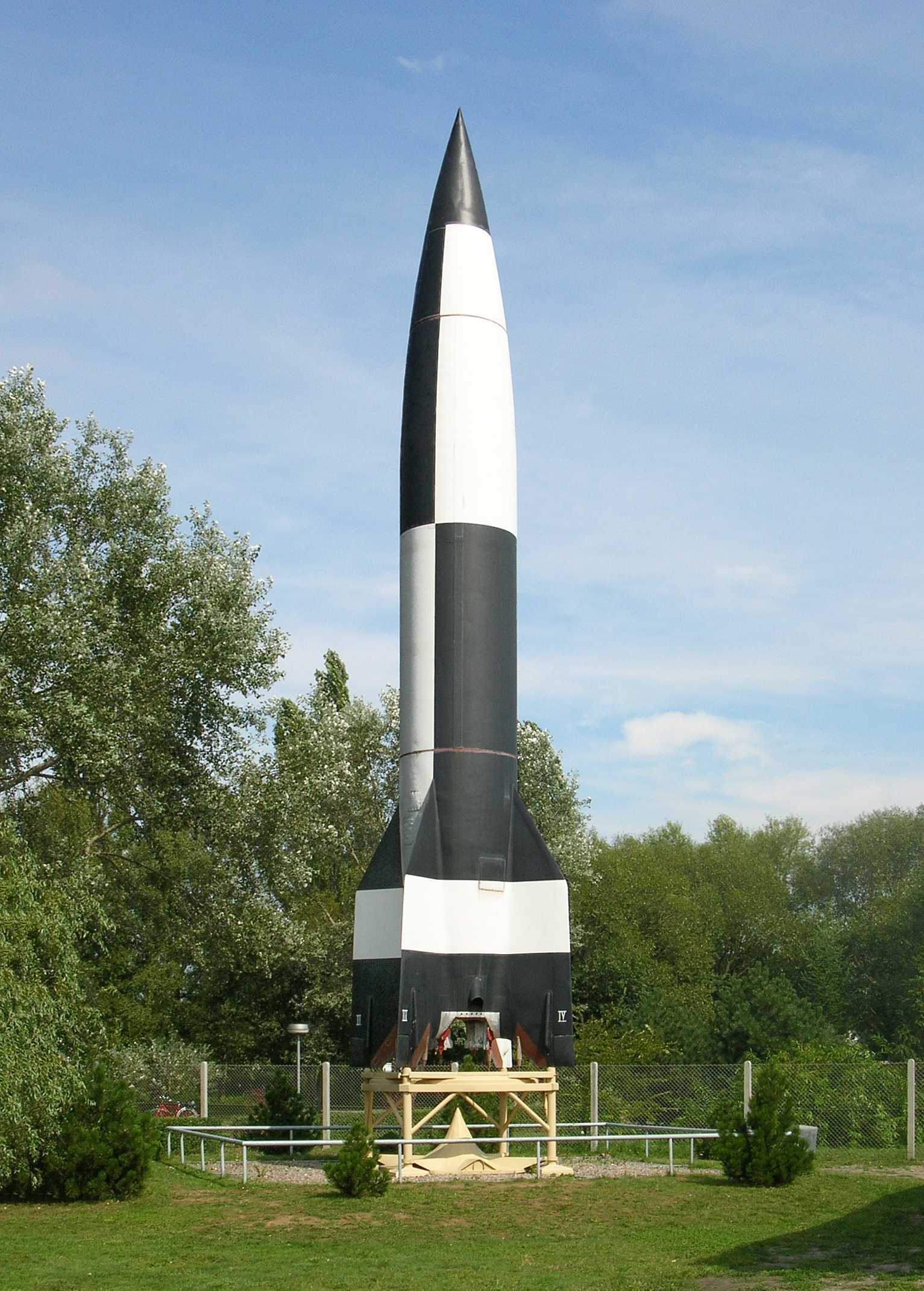
Similar to early Cold War ballistic missiles, the V-2 was highly inaccurate. Ballistic missile accuracy is typically indicated by circular error probable (CEP), which denotes the smallest possible radius n within which 50 percent of projectiles will fall.
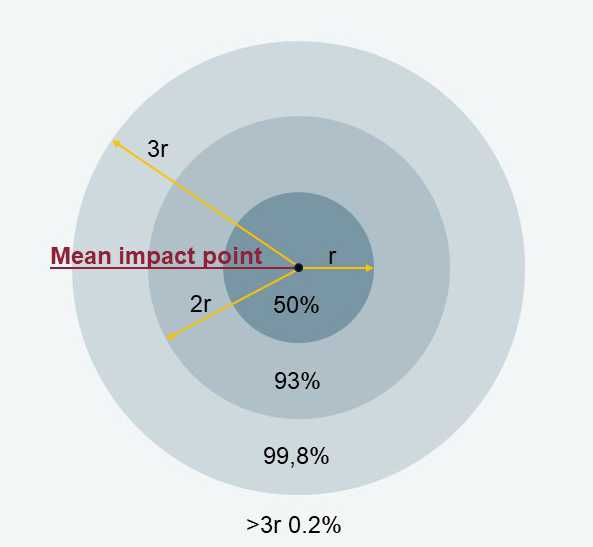
The CEP of early ballistic missiles was measured in kilometres rather than metres. This inaccuracy necessitated the use of massive nuclear warheads to compensate for the missile’s expected deviation from its intended target area, and to maintain a minimum level of effectiveness.
Throughout the Cold War, advancements in guidance technology significantly reduced the CEP of ballistic missiles6. By the end of the Cold War, the United States’ most advanced ICBM, the LGM-118 Peacekeeper, could deliver nuclear warheads over a distance of 10,000 km with a CEP of less than 100 metres. Since then, satellite-assisted navigation and the integration of terminal guidance seekers has further enhanced the precision of ballistic missiles, even allowing ballistic missiles armed with conventional warheads to credibly threaten pinpoint targets. However, manufacturing accurate and reliable ballistic missiles remains challenging, and only a few countries have developed the ability to do so, although their numbers have been steadily increasing.
Ballistic missile technology was initially advanced and dominated by the Cold War superpowers. Despite efforts to curb their proliferation, SRBMs and MRBMs have become fairly widespread due to their relative ease of development, their availability on the international arms market and the strategic value they offer in regional conflicts. In contrast, the proliferation of IRBMs and ICBMs has been largely limited to nuclear weapon states, with no non-nuclear weapon state deploying these types of ballistic missiles today.
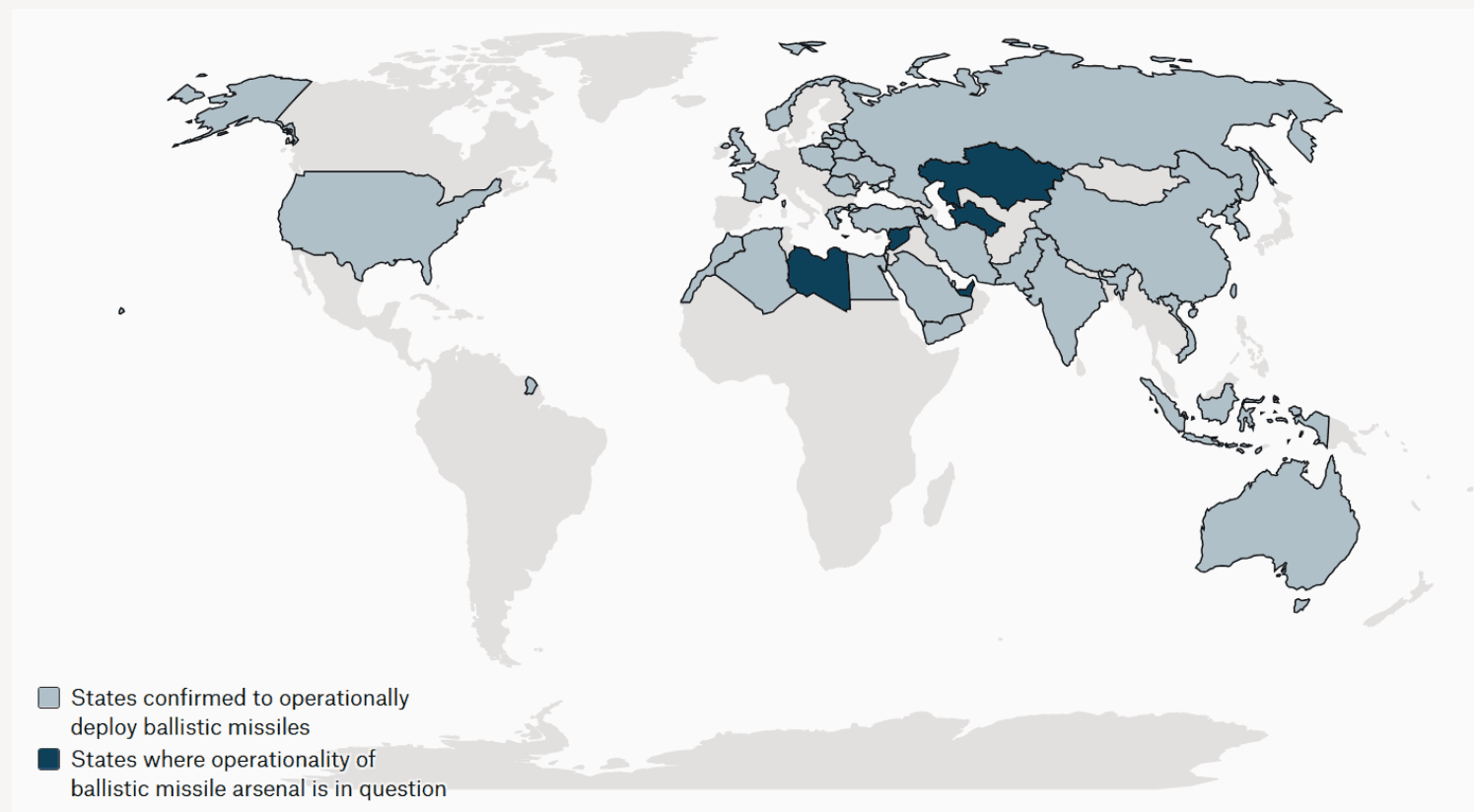
Boost-glide vehicles
Similar to a ballistic missile system, a boost-glide vehicle consists of a large rocket motor that launches a glide vehicle to high altitudes, typically within the mesosphere or lower thermosphere (around 40 to 100 km, depending on design and mission profile). At the end of the boost phase, the missile system releases the glide vehicle, transitioning from powered to unpowered flight, similar to a ballistic missile system releasing an RV.
Boost-glide vehicles are frequently discussed in the context of hypersonic weaponry (the term “hypersonics” is frequently used).
Hypersonic missiles travel at five times the speed of sound or faster. This provides states under attack from hypersonic missiles with little warning time and allows those deploying these weapon systems to service time-sensitive targets very effectively7.
In reality, however, boost-glide vehicles share many similarities with some of the types of ballistic missiles described above. The main difference between boost-glide vehicles and ballistic missiles is the trajectory of the projectile that is released. Glide vehicles travel at hypersonic speed for the majority of their flight through the atmosphere. Unlike traditional ballistic missiles, which follow fairly predictable, arced trajectories, boost-glide vehicles follow a highly manoeuvrable skipping trajectory through the atmosphere, allowing them to alter their flight path substantially.
This combination of high speed and manoeuvrability makes boost-glide vehicles difficult to detect and intercept for missile defence systems optimised for less manoeuvrable ballistic missile threats.
Because of their high speeds at the upper bounds of the atmosphere, boost-glide vehicles are often hyped because of their hypersonic speed. This is not wrong, given that glide vehicles do indeed reach hypersonic velocity, especially at higher altitudes, before slowing down due to increased atmospheric drag as they descend. However, their velocity is comparable to that of many ballistic missiles, which also reach hypersonic speeds during part of their flight. Arguably, the main advantage of a glide vehicle over a ballistic missile is its superior manoeuvrability and potentially its ability to stay undetected for longer periods. That said, the time-to-target of boost-glide vehicles can be longer than that of ballistic missiles, and excessive manoeuvring early in the glide vehicle’s trajectory can slow it down and limit its range.8
The physical design principles and advantages of deploying boost-glide vehicles have been known for decades. It is only in more recent years, however, that advancements in material science and guidance technology have enabled the development and deployment of this type of weapon system. This being said, the technical barriers to deploying boost-glide vehicles remain high. At present, only two states, Russia and China, claim to deploy boost-glide vehicles (the Chinese DF-17 and the Russian Avangard). Several other states, including the United States, France and North Korea, are actively working on boost-glide vehicle programmes.
Rocket artillery
The final type of non-air-breathing missiles that deserves a mention is rocket artillery munitions. Rocket artillery is a type of artillery system that delivers rocket-boosted payloads to a target, launched from a tube or rail. This stands in contrast to traditional artillery which uses artillery shells launched from a gun or howitzer. Rocket artillery can deliver a relatively large volume of fire over a long distance and, depending on the weapon system, with high precision.
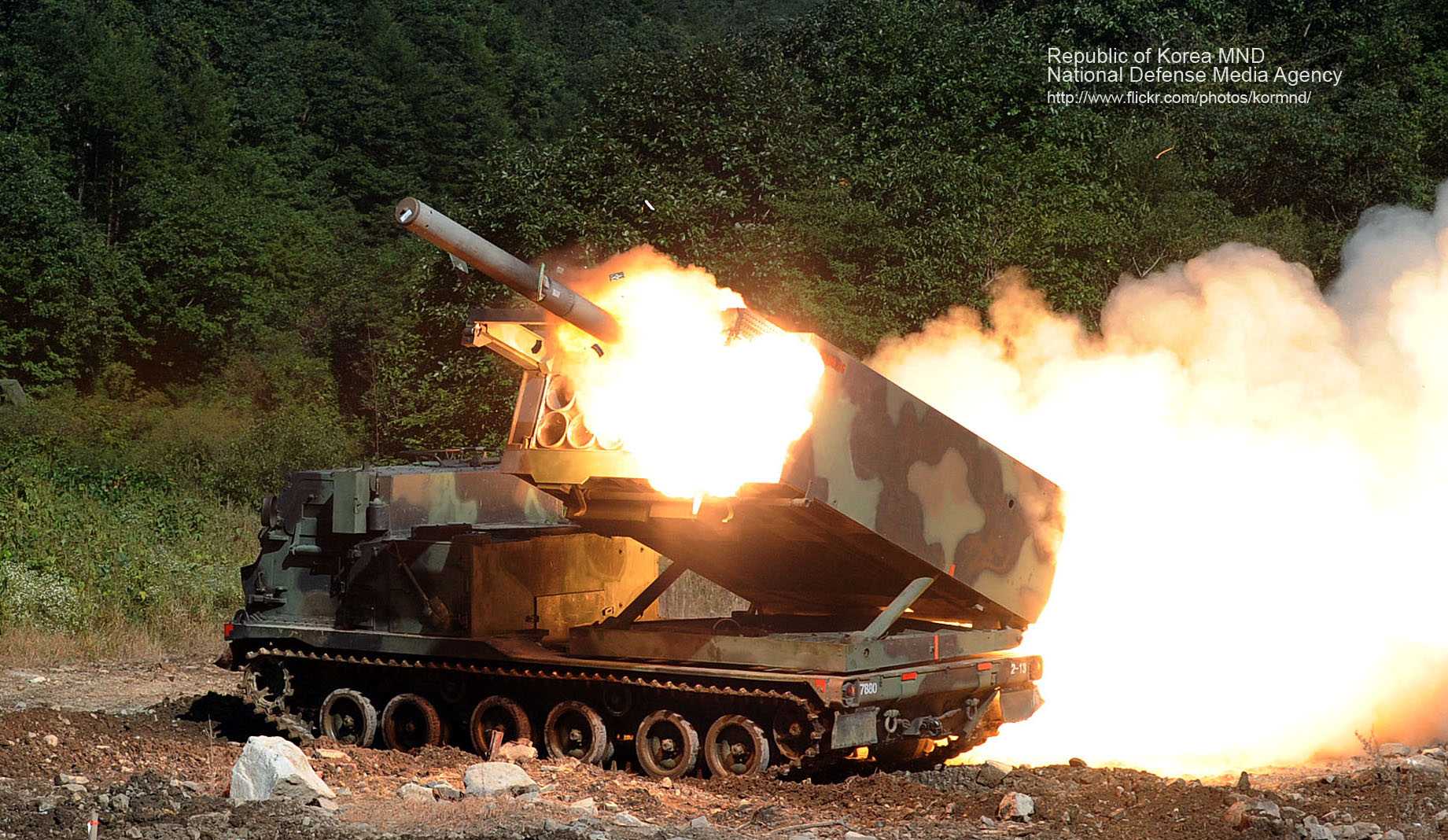
Compared to ballistic and other types of missiles, rocket artillery has received relatively little attention from analysts, at least until the war in Ukraine demonstrated the enormous utility of rocket artillery on the modern battlefield. Ukraine has employed the American M-142 HIMARS rocket artillery launcher together with guided multiple launch rocket system (GMLRS) munitions to great effect in its fight against Russia’s illegal invasion.
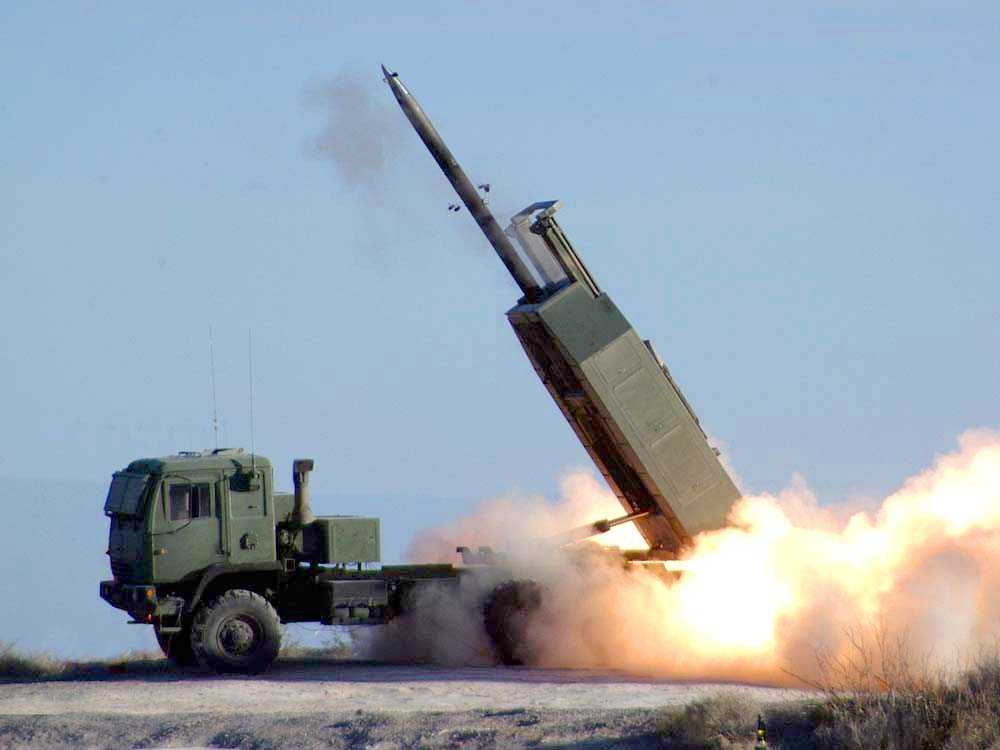
Rocket artillery munition shares several features with ballistic missiles, especially with some types of SRBMs. Most notably, both types of systems feature a rocket-powered boost phase, an unpowered midcourse phase and an unpowered terminal phase. Modern rocket artillery munitions similarly make use of aerodynamic control surfaces to guide the payload more accurately to its target. Much like some types of SRBMs, rocket artillery munitions remain unitary throughout their flight and do not separate their payload in the form of an RV that re-enters the atmosphere.
There are differences, however. Most importantly, rocket artillery munitions are several times smaller than even small ballistic missiles in terms of length and diameter. As such, rocket artillery cannot store the same amount of fuel, meaning the boost phase is typically shorter, resulting in a lower trajectory and a more limited range. For example, GMLRS rocket artillery, and comparable rocket artillery munitions, only have a range of around 70 to 80 km. This being said, the United States is currently working on an extended-range version of GMLRS, the GMLRS-ER, which will have a range of 150 km. This is comparable to some SRBMs, such as the American MGM-140 Block I ATACMS SRBM or the Russian 9K79-1 Tochka-U SRBM, which have ranges of around 120 to 165 km, though most other operational ballistic missiles have ranges of at least 300 km. The relatively small size of rocket artillery munitions also means that they have a relatively limited payload capacity.
The small size of rocket artillery munitions is of course a feature, not a bug in their design. The shorter length and smaller diameter enable launcher platforms to carry several more rocket artillery rounds than ballistic missiles. For example, the HIMARS rocket artillery system can either carry up to six GMLRS rounds or one MGM-140 ATACMS SRBM at a time. This facilitates rocket artillery barrages and salvo attacks, which might be necessary given that rocket artillery is often used to engage more dispersed tactical targets, rather than single-point targets and high-value objects. Limited size and payload capacity also bring down costs, meaning that rocket artillery munitions are typically several times cheaper than ballistic missiles. Finally, it is important to note that the line between rocket artillery munitions and ballistic missiles is not clear cut. In general, as the length, diameter and payload capacity of a rocket artillery munition increase, it will behave more and more like a ballistic missile, and is likely to be employed in a similar fashion, too.
Rocket artillery has been around since the Second World War. However, it has only been in recent decades that rocket artillery munitions have become longer in range and highly accurate, giving them potent precision-strike capabilities. Due to their relatively limited range and payload capacity, rocket artillery munitions are freely available on the international arms market and few constraints to their proliferation exist, especially compared to ballistic and longer-range cruise missiles. Artillery munitions can be expected to proliferate widely in the years ahead.
Air-breathing missiles
Cruise missiles
Cruise missiles are airborne vehicles propelled by air-breathing engines, following a non-ballistic and relatively direct flight path to their targets.9

There are two main differences between cruise missiles and the types of non-air-breathing missiles outlined above:
- Trajectory: Cruise missiles do not follow a ballistic trajectory and always stay within the atmosphere, irrespective of range. They often fly a ground-skimming trajectory, especially during their terminal approach when they get close to the target.
- Propulsion: Cruise missiles do not usually carry an oxidiser. Instead, they use an air-breathing engine that pulls in the surrounding air through an inlet to supply oxygen.
Two types of cruise missiles can be distinguished:
- Land-attack cruise missiles (LACMs): Designed to engage land-based and typically stationary or semi-stationary targets, including ammunition depots, logistics centres, command and control facilities and leadership bunkers, among others. These missiles are typically longer in range and carry a larger payload.
- Anti-ship cruise missiles (ASCMs): Designed to engage mobile and stationary targets in a maritime environment, typically surface vessels. These missiles are often shorter in range and carry a comparatively smaller payload. Depending on the types of guidance systems they feature, they can have land-attack capability.
Unlike ballistic missiles which are often categorised by their maximum range, cruise missiles are often categorised by reference to their cruising speed. Three categories of cruise missiles are typically differentiated:
- Subsonic cruise missiles: Fly at speeds slower than the speed of sound (< Mach 1).
- Supersonic cruise missiles: Fly at speeds faster than the speed of sound but below hypersonic velocity (> Mach 1, < Mach 5).
- Hypersonic cruise missiles: Fly at hypersonic speed (>= Mach 5).
One of the most important components of a cruise missile is the air-breathing engine. The type of air-breathing engine used in the cruise missile determines to a substantial degree the maximum range and speed of the cruise missile. Four types of air-breathing engines relevant to cruise missile propulsion can be identified: turbojet engines, turbofan engines, ramjet engines., and scramjet engines.
Turbojet engine
The most basic type of air-breathing engine is a turbojet engine. In this type of engine, the air is drawn into the engine through an air inlet, compressed and heated by a compressor. The compressed air is then passed through a combustion chamber where fuel is added, and the air-fuel mixture is ignited. This ignition adds energy to the exhaust stream, moving the vehicle forward at high velocity. Examples of cruise missiles employing this type of engine include the British Storm Shadow/SCALP-EG LACM, the American AGM-158A JASSM LACM and the French Exocet ASCM, for example. Turbojet technology for use in cruise missiles is matured and well understood. The main problem with this kind of engine is its relative inefficiency at subsonic velocity, limiting the range of turbojet-propelled cruise missiles.
.jpg)
Turbofan engine
To increase their range, several modern cruise missiles employ turbofan engines. This type of engine functions similar to a turbojet, with the exception that some of the drawn-in air bypasses the engine core and is only accelerated by a ducted fan in front of the engine (hence the name turbofan). The bypassing air remains relatively cool and reduces the overall temperature of the exhaust stream, decelerating the velocity of the exhaust flow. This, in turn, increases the vehicle’s fuel efficiency at subsonic speed, allowing the cruise missile system to fly longer ranges. Many land-attack cruise missiles intended for deep-strike purposes are therefore equipped with turbofan engines, including the German-Swedish Taurus KEPD-350 LACM, the American AGM-158B JASSM-ER LACM and the Russian Kh-101 LACM, among others.
Ramjet engine
To sustainably cruise at high supersonic speed a ramjet engine is necessary. A ramjet is an air-breathing engine that does not include a compressor. Instead, the engine uses the forward motion of the vehicle to ram the air into the engine, compressing it in the process (hence the name ramjet). This design allows the drawn-in air to pass through the engine faster, thus accelerating the speed of the exhaust flow. Cruise missiles employing ramjet engines include the Russo-Indian PJ-10 Brahmos ASCM, the Chinese YJ-12 ASCM and the French ASMP-A nuclear LACM.
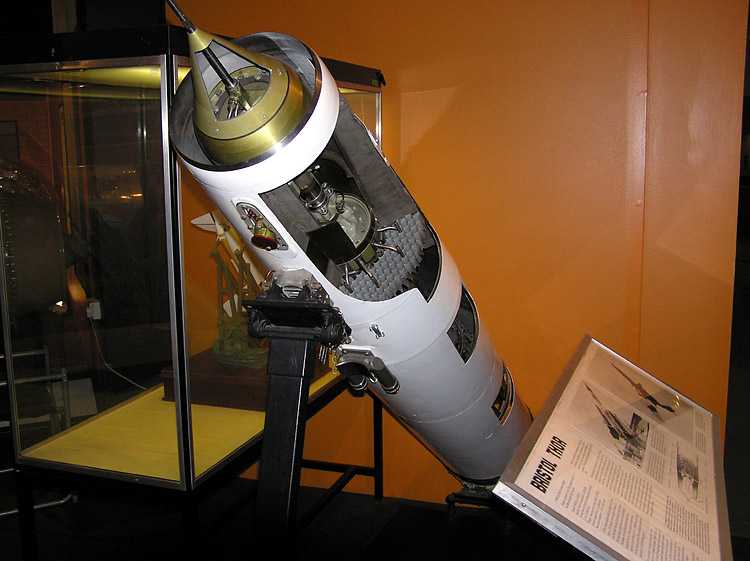
Scramjet engine
To reach and sustain hypersonic cruise velocities, a scramjet engine is necessary. Scramjet stands for supersonic combustion ramjet. A scramjet operates like a ramjet but keeps the air at supersonic speeds as it enters the engine. In a regular ramjet, the air is slowed down to subsonic velocity, allowing less energy to be extracted through combustion. By allowing for supersonic combustion, a scramjet solves this issue. The basic idea behind a scramjet is relatively simple. However, developing a functioning and reliable scramjet engine, and integrating it into a capable and well-rounded cruise missile system, has proven extremely challenging. Currently, only Russia claims to deploy an operational hypersonic cruise missile, the 3M22 Zircon. However, recovered wreckage from Ukraine provides no evidence of a functioning scramjet. Several states are currently working on fielding hypersonic cruise missiles powered by scramjet propulsion, including the United Kingdom, Australia, the United States and Japan, among others.
Compared to ballistic missiles, cruise missiles have historically achieved higher accuracy. This is due to the relative ease of integrating terminal guidance seekers into cruise missiles, as opposed to ballistic missiles. Typically, cruise missiles rely on one of three types of seekers for terminal guidance:
- Electro-optical (E/O) seeker: Uses a camera to capture images of the target area and compares them to prestored images to identify and home in on the correct target.
- Imaging infrared (IIR) seeker: Operates similarly to an E/O seeker but captures images in the infrared spectrum. It detects the heat signatures of targets, making it useful for identifying targets based on their thermal profile, which increases effectiveness in poor visibility conditions such as night, fog or heavy weather.
- Active radar seeker: Emits radar waves and detects the reflections (echoes) from the target. It can actively scan the target area and lock onto the specific radar return signature of the target.
Integrating these types of terminal guidance seekers into ballistic missiles is feasible in principle. However, due to high speed and atmospheric friction, ballistic missiles endure significantly more stress in their terminal phase than cruise missiles. This makes it more challenging to operate delicate camera or radar equipment. Moreover, the high terminal velocity and limited manoeuvrability of ballistic missiles make terminal course corrections difficult. In contrast, cruise missiles are generally slower and allow for a more controlled approach to their target, making it easier to integrate and operate terminal guidance seekers successfully.
In addition, cruise missiles can make use of a number of navigation systems for midcourse guidance that are inaccessible to ballistic missiles, most notably terrain contour matching (TERCOM). This technique involves a process where an altimeter installed on the cruise missiles measures and compares the topography of a terrain underneath the cruise missile with mapping data stored inside the missile to detect deviations from its nominal trajectory. This means that even if the satellite navigation system inside the missile fails, either because of systemic error or enemy jamming/spoofing, the cruise missile still has an effective way to navigate towards its target

Owing to the sophisticated guidance systems that can be integrated into cruise missiles for midcourse and terminal navigation, cruise missiles have traditionally demonstrated higher levels of precision than ballistic missiles. However, modern ballistic missiles have become increasingly accurate thanks to satellite-assisted midcourse guidance, with several short- and medium-range ballistic missiles now rivalling the accuracy of cruise missiles. Technological advancements have also made it easier to integrate terminal guidance seekers into ballistic missiles, further improving their precision, including against mobile targets.
Anti-ship cruise missiles (ASCMs) began to proliferate widely in the 1970s and 1980s. Like rocket artillery munitions, their limited range and payload have made ASCMs widely available on international arms markets. Today, ASCMs are the most widely proliferated type of missile. In contrast, LACM proliferation has been slower, partly due to efforts by LACM-producing states to prevent their spread. However, in recent years, LACM proliferation has increased significantly, a trend that is likely to continue.
Long-range one-way attack drones
While it is possible to increase the sophistication of long-range OWA drones, this will also increase their price. For example, replacing the turboprop engine that is used in many long-range OWA drones with a turbojet engine will increase the drone’s speed. Similarly, it is possible to integrate terminal guidance seekers for improved accuracy, or better electronic warfare protection to enhance survivability. Doing so would make the long-range OWA drone more capable, but its costs will approach that of a cruise missile. This suggests that, similar to the blurry line between rocket artillery munitions and ballistic missiles, the distinction between long-range OWA drones and cruise missiles is not entirely clear cut.
Long-range OWA drones have garnered increasing attention in recent years, particularly due to the war in Ukraine, where both sides have used these weapon systems to strike enemy homeland targets. Russia has deployed the infamous Shahed 131/136 drone (known in Russia under the designation Geran 1/2), imported from and now license-produced by Iran.
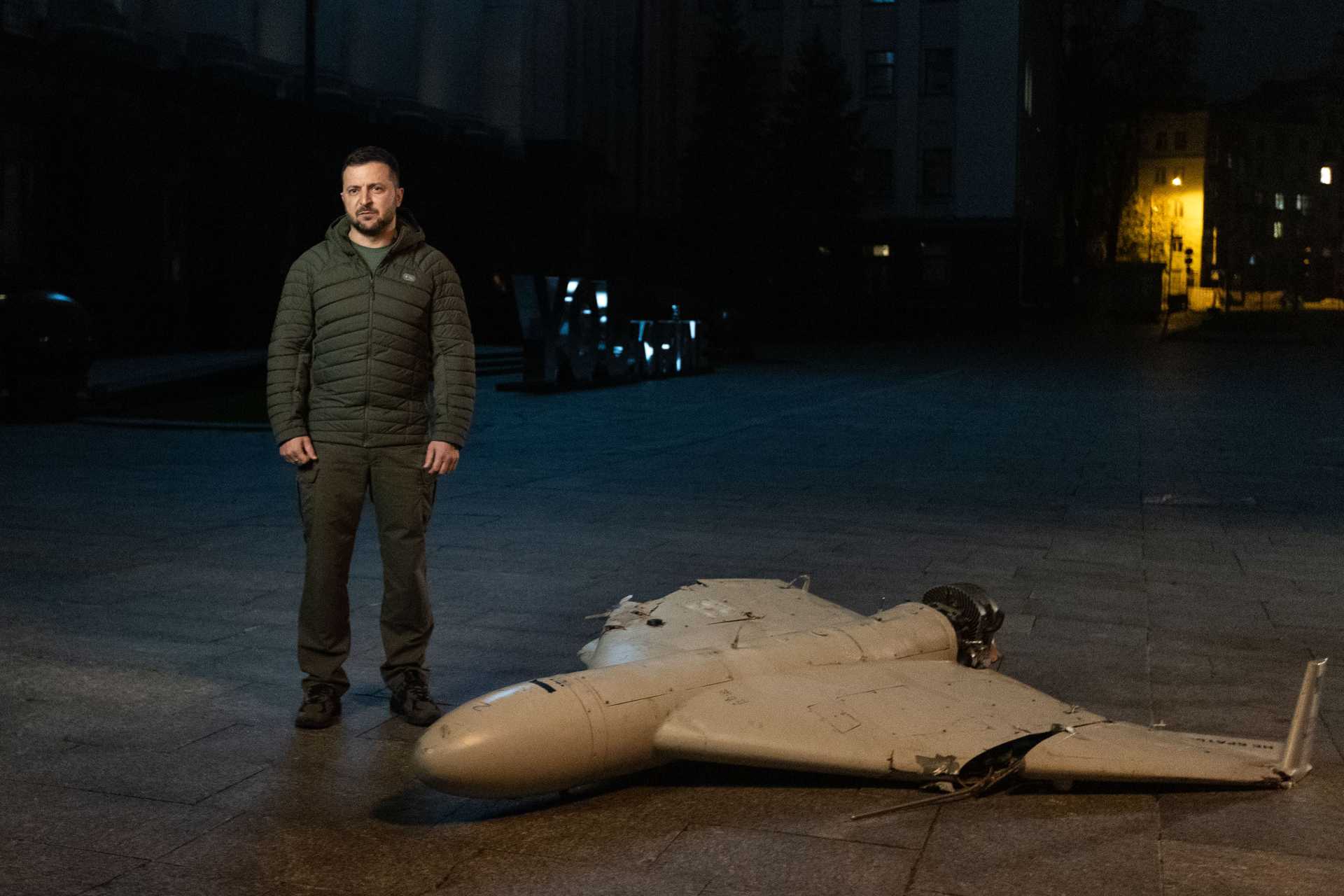
In contrast, Ukraine has relied on domestically produced designs, some of which are highly improvised, such as the conversion of a two-seater commercial airplane into a long-range OWA drone 11. Even before the war in Ukraine, non-state actors in the Middle East had increasingly been using long-range OWA attack drone technology to threaten high-value targets of state actors. Long-range OWA drone proliferation to both state and non-state actors is likely to continue in the coming years.
Summary
This was a lot of detailed information. To make it easier for you to process, the following chart summarises the different types of missiles discussed above
Footnotes
-
Fabian Hoffmann and William Alberque, Non-Nuclear Weapons with Strategic Effect: New Tools of Warfare? (London: International Institute for Strategic Studies, 2022), https://www.iiss.org/en/research-paper/2022/03/non-nuclear-weapons-with-strategic-effect-new-tools-of-warfare/. ↩
-
Markus Schiller, Missile Identification and Assessment (London: International Institute for Strategic Studies, 2022), https://www.iiss.org/de-DE/research-paper/2022/04/missile-identification-and-assessment/. ↩
-
Ankit Panda, Indo-Pacific Missile Arsenals: Avoiding Spirals and Mitigating Escalation Risks (Washington D.C.: Carnegie Endowment for International Peace, 2023), https://carnegieendowment.org/2023/10/31/indo-pacific-missile-arsenals-avoiding-spirals-and-mitigating-escalation-risks-pub-90772. ↩
-
Ibid. ↩
-
Eric Edelman et al., Rings of Fire: A Conventional Missile Strategy for a Post-INF Treaty World (Washington D.C.: Center for Strategic and Budgetary Assessments, 2022), https://csbaonline.org/research/publications/rings-of-fire-a-conventional-missile-strategy-for-a-post-inf-treaty-world. ↩
-
Donald MacKenzie, Inventing Accuracy: A Historical Sociology of Nuclear Missile Guidance (Cambridge, MA: MIT Press, 1993). ↩
-
Steve Fetter, Tim Thies and Victor Mizin, Hypersonic Boost-glide Vehicles: Evaluating Inadvertent Escalation Risks (Hamburg: Deept Cuts Commission, 2024), https://deepcuts.org/media/pages/publications/issue-briefs/hypersonic-boost-glide-vehicles/f5f8115ddd-1719229200/hypersonics_issue_brief_with-policy-recommendations.pdf ↩
-
Cameron L. Tracy and David Wright, “Modelling the Performance of Hypersonic Boost-Glide Missiles,” Science & Global Security 28, no. 3 (2020): 135–170, https://scienceandglobalsecurity.org/archive/sgs28tracy.pdf. ↩
-
Fabian Hoffmann, Cruise Missile ProliferationFabian Hoffmann, Cruise Missile Proliferation: Trends, Strategic Implications, and Counterproliferation (London: European Leadership Network, 2021), https://www.europeanleadershipnetwork.org/wp-content/uploads/2021/03/Fabian_Final-2.pdf. ↩
-
Marcel Plichta and Ash Rossiter, “A One-Way Attack Drone Revolution? Affordable Mass Precision in Modern Conflict,” Journal of Strategic Studies (2024), 1-31, https://www.tandfonline.com/doi/full/10.1080/01402390.2024.2385843. ↩
-
David Axe, Ukraine Packed a Cessna-Style Plane With Explosives, Added Remote Controls and Kamikaze’d It Into A Russian Drone Factory 600 Miles Away, Forbes, 2024, https://www.forbes.com/sites/davidaxe/2024/04/02/ukraine-packed-a-cessna-style-plane-with-explosives-added-remote-controls-and-kamikazed-it-into-a-russian-drone-factory-600-miles-away/ ↩
